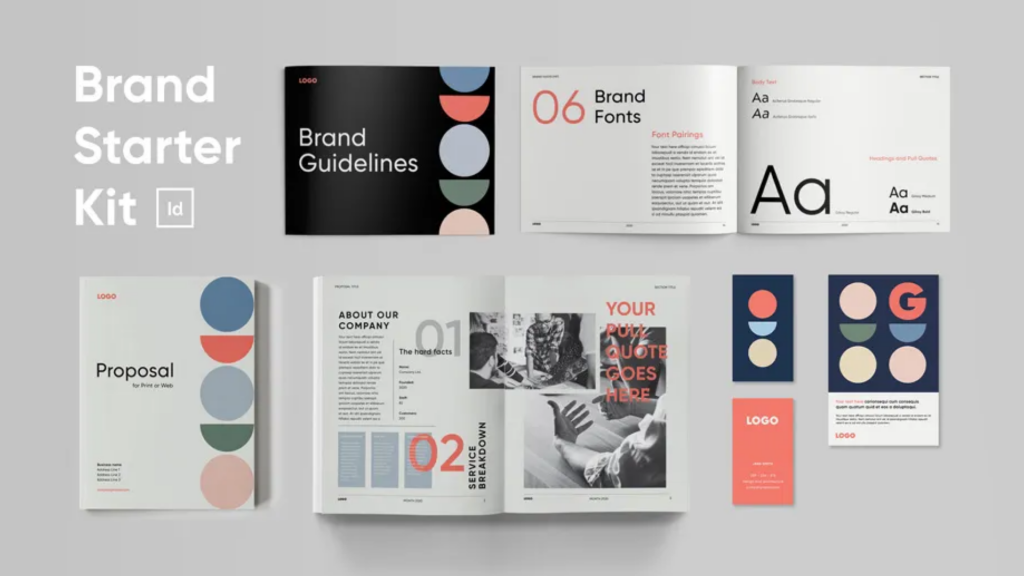For too long, leadership teams have mentally separated “branding” from “marketing” as two different or efforts. Oftentimes managed by separate people.
Unfortunately, brands that do this suffocate their ability to expand new and existing channels, because they miss out on valuable marketing data that can inform their creative decisions and testing strategies.
As we’ve worked with clients big and small over the years, we have consistently found that creative and marketing integration is the number one driver of digital performance and growth across channels. Keep reading to find out why.
Today’s consumers are inherently visual, relying on color cues, motion graphics, witty quotes, and short videos to make decisions about what to buy and who they want to be.
They also consume content across a variety of digital channels—like Facebook, Google, Pin- terest, email, and others—as well as different mediums, such as their iPhone, laptop, TV, and billboards they pass on the way to work.
What content you should be sharing across channels to build your brand is a question many business leaders struggle with. So how do you put it all together?
Like any good craft cocktail, the ingredients might be the same, but the experience and presentation make it memorable. And whether you prefer shaken or stirred, it starts with the right recipe.

Brand and Creative, Meet Marketing
Often, direct-to-consumer (DTC) brands fall into one of three camps when it comes to creative and marketing integration.
1. Ad-Hoc & Reactive Creative Strategy
Brand teams work with internal and external creative teams to execute ad-hoc creative projects. Creative investments get limited budgets, and older assets get reused often because of this.
The result? As each channel creates ad-hoc (and channel specific) assets, brands lose the opportunity to better integrate their storytelling and creative messaging across channels. This leads to a choppy customer experience and decreases the value of each dollar spent on marketing as customers get a fragmented experience.
2. Divided Branding & Marketing Teams
Leadership works with internal and external creative teams to come up with a campaign identity and voice, execute production, and get final videos, animations, motions graphics and photos over to the marketing teams. While there’s an investment in content, it’s not fully optimized.
In this scenario, the creative teams produce general assets, so repurposing for specific channels sometimes requires further editing. Marketing teams, then, have to use what is given to them, instead of influencing production from the start.
3. Best In Class
The brand understands that creative and branding is
at the center of its customer journey. Marketing and branding teams talk regularly about channel insights, campaign trends, and learnings to inform future creative planning and investments.
With this scenario, teams collaborate and host regular strategy touchpoints to ensure the branding and marketing strategy are integrated and data driven.
Best-in-class brands understand the short-term performance gains that good content can provide across digital marketing channels and how it contributes to long-term brand building and awareness.
Step 1. Digital Brand Guidelines
Companies that invest in brand identity usually have a brand guide that showcases their voice hierarchy, customer personas, color scheme, font hierarchy, logo formats, and so on. It’s a constantly evolving document that sets explicit guidelines that the entire organization can easily follow. It should also highlight the brand story in a way that is clear, concise, and inspirational—something you could recite from memory.
But most DTC brands have not evolved their brand guidelines to build out specific strategies for their various digital marketing channels. This is important to do, because it helps you maximize the cross-channel customer journey.
Each channel is different, and your creative strategy should maximize those touch points with your customer.
Facebook, for example, is great for top-of-funnel awareness marketing, so focusing on highly engaging, short, and brand-intro type video content is key. The goal is to drive clicks, so you can retarget those users with other brand and dynamic product content across other channels like Pinterest, YouTube, and display ads.
Email content, on the other hand, is your opportunity to personalize content and leverage larger-format creative, since it gives you more space to communicate than a Facebook feed ad placement. While Facebook calls for video and motion graphics, email and websites should focus on high-quality photography and GIFs.
If your brand does not have a digital component to your brand guidelines, your team should strive to build this out. It will help focus all future content investments by ensuring production takes into account the needs of each channel. By fueling your marketing channels with tailored content, you maximize your ability to communicate with customers in ways that are data driven, interactive, personalized, and refreshing.

Step 2. Cross-Channel Content Portfolio
One of the challenges facing CMOs today is the breadth of digital marketing channels they need to manage and be aware of, all with different attribution models and purposes.
Facebook is one of the most efficient awareness platforms if you are trying to drive a profitable cost per acquisition. YouTube and display CPMs allow you
to get in front of more people, but performance metrics are often worse than Facebook since they are more brand awareness channels. Pinterest is great for driving traffic by nudging people to explore different pins and boards of related items.
Each marketing channel offers different placements or ad units that brands can leverage to communicate a message to a customer.
Based on our experience working with dozens of DTC consumer brands, the following are some cross-channel best practices for making your creative cocktail and better integrating your branding and marketing investments.
“Facebook is one of the most efficient awareness platforms if you are trying to drive a profitable cost per acquisition.”
Facebook Advertising Fundamentals
Facebook has evolved a lot since the basic feed ad placement. Today, Instant Experiences, video carousels, and story formats allow brands to push the boundaries of engagement with new and existing customers.
By leveraging motion graphics, cinematic video, and photography, brands have a better chance of pulling customers into the brand lifestyle and ethos and then remarketing to them with dynamic products they looked at on-site. Facebook and Instagram provide some of the best inventory in the digital advertising industry, so it’s definitely smart to maximize your placements here.
Shoppable Placements
Instant experiences and carousel placements on Facebook allow you to show an engaging video, motion graphic, or a static image followed by a shopping experience where the user can view many products via a click or swipe. With these placements, advertisers can bring their brand ethos and aesthetics to life, while letting users explore products freely.
Storytelling Opportunities
Facebook and Instagram stories are 9×16 vertical placements that take over your entire mobile screen. These placements give you the opportunity to be the only thing on a user’s phone as they scroll through the stories of their friends, family, influencers, and celebrities. It’s a great opportunity to catch the user’s attention and tell a great short story.
At Markacy, we find that layering three short stories back-to- back-to-back, each telling a short unique story or elevating a brand’s unique selling proposition, maximizes these placements. Typical user behavior within stories is to scroll through them quickly. By layering in three short, five-second story ads, you have three opportunities to capture the user’s attention.
Note: story ads should be formatted with 100 pixels of padding at the top and 250 pixels of padding at the bottom to make room for the brand handle and “Shop Now” that Facebook and Instagram includes on the assets.
Feed Ads
1080×1080 (square) feed assets are the staple of the Facebook and Instagram advertising platform. Leverage video, motion graphics, and high quality lifestyle or product photography to maximize these placements. Focus on shorter assets that are .6 – .10 seconds long and that are edited to loop. Example, the last scene blends back into the first scene. The user experience on Facebook and Instagram is that the platforms automatically loops the asset while the user is watching the ad.
Dynamic Product Ads
Dynamic Product Ads show customers product images of SKUs they looked at while on your website. This is a key placement, as it drives user personalization and is a great nudge to convert.
Placement Optimization
With this tactic, you can increase the efficiency of your Facebook spend by getting placements in front of your target audience on either Facebook or Instagram, depending on which is less expensive at that point in time. By having a portfolio of content on Facebook, you can take full advantage of Placement Optimization by having Facebook leverage your creative portfolio to help you get in front of users in the most cost efficient way possible.
Google Advertising Fundamentals
For Google, the main things you’ll need to maximize from a creative perspective are your Shopping, YouTube, and display assets. Below are best practices for each.
Google Shopping
Google allows advertisers to feature product images with brand name, product name, price, and review stars, which populate based on user search queries. Optimizing your product imagery and leveraging a product feed, which we talk about below, are great ways to ensure success with this channel.
YouTube
There are more than 400 hours of new content uploaded to YouTube every minute! For advertisers leveraging this channel, personalized creative targeting is vital. Google has put out guidance on optimizing content for the platform and below are a few of their best practices.
Display Advertising
Display is the base hit of digital marketing, but can be really effective for reaching a lot of new and existing customers in remarketing pools at cheap CPMs. Similar to YouTube, don’t expect Facebook-like performance on conversions; this channel is more about driving qualified traffic back to your website.
The key to display is maximizing your top placements with motion graphics. Focus on simple, attention-grabbing display ads with clear CTA buttons. These display ads show up on sites like ESPN, The New York Times, CNBC, etc. There is typically a lot on the page competing for users’ attention, so standing out in a clear and concise way is very important. Personalizing these placements with dynamic product ads of items users have viewed on site can be a helpful nudge to drive conversions.

